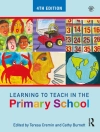‘[This book] addresses issues on both sides of the Atlantic; examines the theoretical underpinnings of environmental gerontology…; and provides useful practical applications and guiding principles….Recommended.’– Choice: Current Reviews for Academic Libraries
The environments in which people live out their later lives have a strong impact on their identity and provide opportunities for nourishing social interactions. This volume translates the insights derived from contemporary research on residential environments and public spaces that enhance well-being into practical recommendations for the design of such beneficial community environments.
The text is grounded in the conceptual and theoretical underpinnings of current research on place attachment, environmental meaning, and community living in later life. Emphasis is placed on how to design residential spaces that facilitate the development of a sense of place or home, and investigation is made into the kinds of lifestyles such spaces foster and support. A major theme pervading the text is the juxtaposition of private and public space. The book also addresses such themes as the transformation of spaces into places of personal identification and attachment, the need for shared intergenerational spaces, and consideration of diverse populations when designing public spaces. The book also considers how emerging public policy agendas affect the development and management of environments for the elderly. Environmental Gerontology includes the contributions of scholars in anthropology, architecture, economics, education, geography, gerontology, planning, psychology, sociology, and numerous health sciences, who hail from North America, Europe, and Asia. With its strong interdisciplinary focus, this text offers innovative and judicious recommendations for the creation of community environments that are truly beneficial for older adults.
Key Features:- Provides an up-to-date synthesis of the latest research on the meaning of place to older people and its relationship to well-being
- Offers fresh insight and critical perspectives on community planning and environmental design
- Considers private residences, retirement communities, long-term care facilities, and public and private community spaces
- Includes guiding principles for environmental design and practice relevant to the documented needs of older people
- Synthesizes contributions from international scholars in many disciplines
Mục lục
‘
Prologue:Guide to the Reader
PART I: INTRODUCTION TO THE MEANING OF PLACE IN RESIDENTIAL AND PUBLIC SPACES
Chapter 1 The meaning and significance of place in old age
Chapter 2Social interactions in public spaces and places: a conceptual overview
PART II: PRIVATE RESIDENCES
Chapter 3 Creating and sustaining homelike places in own home environments
Chapter 4 A place of one’s own: Reinterpreting the meaning of home among childless older women
PART III: LONG-TERM CARE ENVIRONMENTS
Chapter 5 The complex process of becoming at-home in assisted living
Chapter 6Creating homelike places in institutional care settings in Ireland
Chapter 7Remembering home in remembered places
PART IV: PUBLIC SPACES
Chapter 8 Mobility in Outdoor Environments in Old Age
Chapter 9Older people’s use of unfamiliar space
Chapter 10Building relational spaces and places: Intergenerational pathways for entering into the mainstream of life
Chapter 11Creating homelike places in a purpose-built retirement village in England.
PART V: CHALLENGES OF APPLICATION
Chapter 12Past, present and future in designing private and public environments for creating and sustaining place
‘Giới thiệu về tác giả
Miriam Bernard, Ph D, is Professor of Social Gerontology and founding Director of the Research Institute for Life Course Studies at Keele University and President of the British Society of Gerontology.












